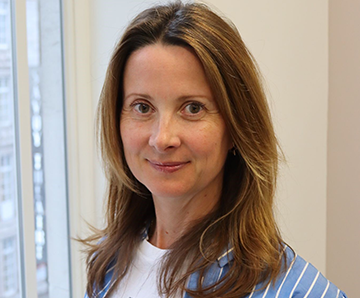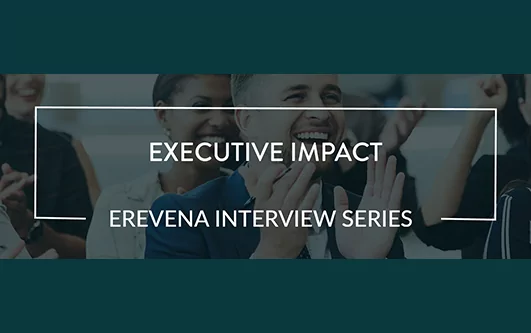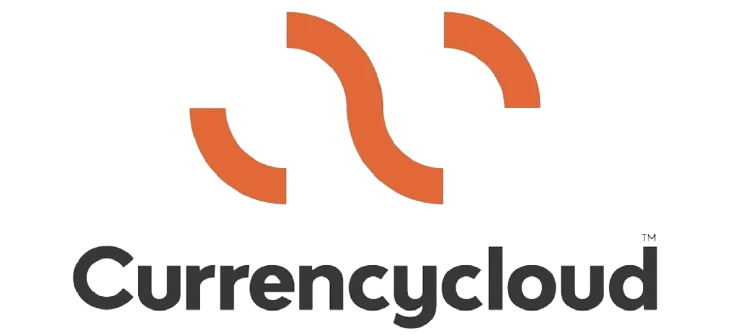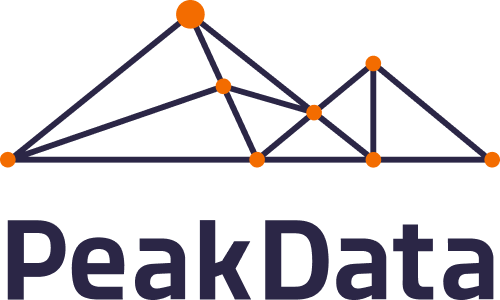Laurent Bride, Chief Technology Officer at Komodo Health, talks to Erevena’s Anne Lucas about his current roles as an independent board member and board advisor, for which his broad-ranging technology experience is of huge value. He also offers advice to CTOs on how to combine their role with the move to a Board member.
How did you start in technology?
I grew up in France and had a traditional French engineering educational background, with a science baccalaureate and a computer science engineering degree. I started my career as a developer in France and spent the past two and half decades between France and the USA . Earlier on, I had the opportunity to join enterprise software company Business Objects in France with the goal to join their UK entity before they offered me a position in the San Francisco Bay area which was hard to refuse! I joined their tech support team in California to support their products’ SDKs and found out that I was one of the few coders in the team which will deem to become very handy for my future there.
How did you build your experience to take on more senior roles?
I grew through the ranks at Business Objects, engaging with customers while solving their most challenging problems all the way to leading the innovations team and building the next generation of products. It was a fascinating and enriching time at all levels. The business was led by Bernard Liautaud, one of the company’s founders, and now a French legendary CEO and investor who grew the company from one employee to a billion dollars revenue before selling to SAP for $6.98 billion USD. Entrepreneurship was front and centre at the time, you were encouraged to think outside of the box and it was easy to grow with the company if you showed initiative and drive. This is exactly what I did and has been the foundation of my career ever since. I’m still in touch with many of my Business Objects colleagues nowadays and even continue to work with a few of them. I would say it was one of the best schools for leadership, management, and technology.
What happened when SAP acquired Business Objects?
I stayed a little over 4 years post-acquisition. We were SAP’s biggest acquisition at the time and kind of the new kids on the block. That allowed us to have a lot of visibility at the SAP’s Senior management levels. Our products were perceived as very innovative with a great user experience when SAP’s products were considered more traditional and with a limited focus on UI and advanced analytics tooling. Bottom line, they were particularly interested in understanding how we were driving innovation and customer value. I was given lots of opportunities, working in Europe, in the US and in their Waldorf HQ in Germany. SAP was a different beast altogether – a huge company on a different scale. I really enjoyed my years there. I learned a ton from them, such as how you scale a business, focus on customer value and how you generate billions of revenue, although obviously you don’t generate that level of revenue as a start-up!
How did you continue expanding on the expertise you now use as a board member?
I left SAP and initially joined Axway, known for its MFT, EDI and API management platform where I could take my first steps in the Middleware world. This is when I crossed paths with Bernard Liautaud again. He was one of the early investors and chairman of the board at Talend and persuaded me to join the company. Talend was going through its next phase of growth and transformation with its two founders leaving the company, and the roles of Chief Product Officer and Chief Technology Officer were being combined. I came in to lead product, engineering as well as other functions, building the tech stack, going through the Big Data revolution and moving Talend to a multi cloud applications and SaaS platform.
I spent six amazing years at Talend, under the leadership of Mike Tuchen, another “Product minded CEO”, first as their CTO and then COO and saw it through growth play and IPO. It was a truly great experience at a time when the tech industry was also changing enormously. I learnt a lot, from completely rebuilding the tech stack, moving from a monolith on-prem product to a multi-tenant cloud integration platform. We saw the cloud revolution coming in, we saw big data coming in.. and we took a company public! Who could ask for more?
You then moved into the Healthcare sector – can you tell us about this?
I left Talend in October 2020 to do something different and apply my years of building software products experience to an industry. And this is Healthcare which came knocking at my door through Komodo Health.
Komodo was a hyper-growth data-focused health-tech company which was looking to expand their data products and applications portfolio, with a stronger platform and enterprise focus. It was at the cornerstone of what I’d been doing for years and joining the team was a no brainer as I immediately clicked with its founders Arif Nathoo and Web Sun.
When and how did you add board-level positions to your CV?
I was actually still at Talend when Bernard Liautaud reached out to me to see if I could engage with one of his company’s portfolio to advise their CEO. They were looking for someone with my international experience, scaling products and platform in an international environment.. I did that for about a year and a half with the idea of giving something back to the start-up community. I’ve since taken up positions on two company boards as an independent board member.
The fact that I have a French background and US experience came in very useful. I am still very much rooted in European culture, but when it comes to business, when it comes to scale and when it comes to technology, I am much more rooted in the US. There’s who you are, how you grew up, and then how you see business or technology and that’s what I was bringing to the Board.
Although it has been changing in Europe, if you look back 10 years or so, technology was traditionally seen as something that supported the business, whereas in the US it was always viewed as a business driver not just an enabler. That was the difference between the two cultures and I was bringing a way to bridge that gap.
What more does your wealth of experience bring to the board room?
Even though I’m a CTO, I have also been a COO (at Talend), so I’ve always been close to the business and have spent a lot of time with customers. As a CTO, it’s not just about the technology or the architecture, but about being grounded in the business. This is something I learned at Business Objects, at SAP and at Talend where we had a really tight executive leadership team and strong product-led CEOs with whom I spent a lot of time discussing not only technology and product but also business. Technology just for the sake of it isn’t a finality. You can’t simply geek out on new tech. You need to think about product market fit, go-to-market as well as launching and landing your products. That’s how I like to approach things – not just as a tech CTO, but as a product and customer focused CTO.
I would say that there are differences in how CTOs in Europe and the US approach things. Europe would put a bigger focus on initial design, long term sustainability and a strong cursor on initial quality while the US will often optimize for speed, rapid revenue growth and fast iterative processes. This is anchored in those continents’ DNAs with its pros and cons.
At the end of the day. CTOs need to adapt to the market they’re working in. The competition is also different with faster access to capital in the US if they’re ready to take on the market. This means a company can move faster, go higher faster and scale down faster. I try to bring this knowledge to bear in my board roles.
Another thing where I am helping a lot is with networking. As board members, we are enablers. We connect them with the right talent and with our networks. It could be networking on the VC and financial side, helping them to pitch and get feedback. Or a tech network and potential partners if they want to open up new channels. These networks are an important building block that experienced board members bring. And it’s even more helpful when you have networks on both sides of the Atlantic.
Do you see a big difference between French and US start-up boards?
Not so much on the governance – you have rules and regulations that are different on both sides- or on the way they operate. I think the difference is much more on where the company is on their maturity cycle. Are they a Series A or Series B, or a pre-IPO company. It depends on the size and the product market fit. Also when you are with younger companies, usually the people on the board are investors and they’re not bringing independent Board members unless they’re looking for a specific skillset. For example, the two boards I’m currently sitting on were particularly interested in my data, analytics and platform background. They were looking for knowledge that investors didn’t have. It’s rare to have independent Board members at an early stage unless they have a specific need. They might bring in board advisors but less so independent Board members.
How do you manage being a full-time CTO and an independent board member?
As I still hold a CTO operational role at Komodo, my challenge is to compartmentalise the two roles. At Komodo, I’m 100% committed to the business every day where I’m expected to drill into details, define products and run teams, even do code review with my teams if needed. This is my number #1 priority.
Then there’s the board role, which usually sees me engaged super early in the mornings and at weekends. That’s how I marry the two. Usually, I ask the company what commitment they are looking for from me. It might be a few hours a month and if we’re dealing with Europe that’s when the early mornings are needed, while I might have calls with the CEO over the weekend.
How does the style of working differ between the two roles?
It is very different. On the one hand, I’m at the helm as CTO, so I am making decisions and managing the operational budget and so on. Then, on the other hand, as a board member I have to make a big shift because I’m not responsible for the operations, I’m not engaging people on a detailed architecture or how to manage their teams on a day to day basis. Instead, as a board member you have to be collaborative and much more of a sounding board. There will be times when you are specifically asked for your opinion, or perhaps to coach and mentor a junior person.
Being a board member is more about guiding than being someone’s boss. You need to actively listen and ask questions. What are your challenges? What are you trying to do? How can I help you? Can I help remove roadblocks? Do I need to connect you with the people who have done this before? And then, when you switch back to your full-time CTO role, it becomes much more directive in a way as you are responsible for the outcome. So that’s the switch you constantly have to make.
Is there anything in particular that stands out for you as a CTO that has helped to prepare you for your role as an independent board member?
At Talend, I really loved the fact that, as C-levels, we were part of all board meetings from day one. We were all involved in the board preparation and our CEO, Mike Tuchen, enabled us to build relationships and really interact with the running of the company. In the early days, we had investors on the board from both France and the US. Then, as the board evolved and we became public, we brought in independent board members who weren’t investors. I had a chance to really experience the full spectrum of what board members look like at different stages of a company’s growth. And you work with them all differently. For example, an investor that has put money in a series A round will have a different perspective than an independent board member who doesn’t have skin in the game.
At Talend, the board was very keen to engage on the product strategy. Not so much the technology itself, but how we would be packaging, marketing and selling it. This was an extremely rich experience for those of us at C-level engaging with the board.
How do you measure your success as a board member?
It is hard to quantify because it’s not like being in an operational role where you can say that you have delivered X or your engineering productivity was Y. So, you’re looking more at the dynamic and the personal interaction with the CEO and other board members. Then there’s whether you actually make an impact on the business. For example, if you’re having a discussion about a technology partnership or a new architecture or product transformation, how did you engage with the executive on the operational side? And what progress did you see? The feedback you receive is another metric, as is whether the business is growing or not during your tenure on the board.
If it’s not working, you will be told. Or you might decide yourself that it’s not working and choose to leave the board. Perhaps the CEO isn’t engaging with you – or other board members. Your role is to push the CEO and C-Suite as well as have discussions with your peers about progress and performance. But it can be tricky, especially if you’re an independent board member versus an investor board member with skin in the game.
What advice would you give a CTO who’s thinking about building a portfolio career?
I would say start with companies that you understand. Don’t go into a business where you have no experience of the underlying technology or if you don’t understand its market. Be clear on what is it that they are trying to do. For example, is it a company trying to move from old monolith technology to a SaaS platform? Identify what they are struggling with and how you can help them. There is no point going to a company just for the sake of it because you simply won’t bring anything to them.
You’ll just be a name on company documents and will end up feeling useless.
So, pick the right company! One that fits with your background. If you start with a small company with which you have a personal product fit, you’ll be better able to coach or mentor their tech people or product folk. Don’t go there if you don’t connect with the company’s architecture, product fit, talent strategy, etc.
Then, as you become more comfortable in your new board role you can expand your horizon and go after new domains or new industries. Also, if you’re brought in as part of a management team restructure, make sure that the CEO is clear about your role and what’s expected of you, so that there is no conflict with other board members. Finally, I would never join the board of a company whose product was competing with that of the company I was working for in my day job so be aware of potential conflicts of interest. Sometimes these are not obvious and can develop over time as you are in your role. It will pretty much be up to you to see this situation evolving and to make the decision to leave the board.
What’s the maximum number of board positions you’d take on?
I wouldn’t put a number on it because it depends on the engagement and what a company is looking for in its board members. It also depends on the interests of the board – you might leave one board and join another for a specific purpose. You could be on the board of a company that is acquired, so you’re no longer needed. You have to be aware both of what’s needed now and of what’s going to happen over the coming quarters.
While there is no maximum or minimum number of boards I’d sit on, as an operational CTO, I’d think it unwise to join too many because you won’t have time to do a good job. It also comes down to the expectation. Are you expected to give a couple of hours a month, or a couple of hours a week? Do you need more engagement at the beginning, or if the company is going through specific change?
You need to be comfortable with the time you can spend and I would always work with the CEO to figure this out.
Share this article:












